Deicing Property of Asphalt Mixture Containing Steel Wool Fiber by Electromagnetic Induction Heating
Abstract
:1. Introduction
2. Materials, Test Equipment and Methods
2.1. Materials
2.2. Instrument
2.3. Methods
2.3.1. Preparation of Specimen
2.3.2. Deicing Principle of Electromagnetic Induction Heating
2.3.3. Electromagnetic Induction Heating Process
2.3.4. Grey Relation Entropy Analysis Method
2.3.5. BP Neural Network Prediction Model about Average Deicing Rate
3. Results and Discussion
3.1. Evaluation Index—Average Deicing Rate
3.2. Infrared Thermal Images and Temperature Variation of Specimen Surface
3.3. The Effects of Various Factors on Average Deicing Rate
3.3.1. The Variation Laws of Content and Length of Steel Wool Fiber and Average Deicing Rate
3.3.2. The Variation Laws of Ambient Temperature and Average Deicing Rate
3.4. Results of t-Test
3.5. BP Neural Network Prediction Model
4. Conclusions
- The electromagnetic induction heating deicing technology opens up a new idea for pavement deicing. The average deicing rate of asphalt mixture increases with the increase of length and content of steel wool fiber.
- According to the grey correlation entropy analysis, the length and content of steel wool fiber, ice thickness, output current and ambient temperature have influences on the average deicing rate of asphalt mixture, among which the content and length of steel wool fiber (internal factors) are the main factors affecting the deicing performance under induction heating.
- Under different influencing factors, BP neural network prediction models about average deicing rate are constructed. These models have high prediction accuracy and its prediction results have certain practical reference value.
- The deicing research of smooth pavement surface has been studied, so the deicing research of steep slope and fast turning pavement in mountainous area are considered. The deicing research under different slopes such as 5%, 10% and 15% are investigated, which can provide security for special pavement section and reduce the economic cost of deicing in winter for road maintenance department.
- Based on the deicing parameters of steel wool fiber asphalt mixture, the development of deicing machinery suitable for practical engineering is considered.
Author Contributions
Funding
Institutional Review Board Statement
Informed Consent Statement
Data Availability Statement
Conflicts of Interest
References
- Shen, C.P.; Lv, J.L.; Ma, G.Q. Research on maintenance technology of snow and ice removal on expressway in winter. Highw. Traffic Technol. 2008, 25, 239–242. [Google Scholar]
- Wang, H.; Wang, Z. Evaluation of pavement surface friction subject to various pavement preservation treatments. Constr. Build. Mater. 2013, 48, 194–202. [Google Scholar] [CrossRef]
- Cheng, G.Z.; Li, H.; Xu, L. Analysis of characteristics of snow covered pavement and its evaluation of driver’s driving tension. J. Jilin Univ. 2011, 41, 355–359. [Google Scholar]
- Wang, H.; Yang, J.; Liao, H.; Chen, X. Electrical and mechanical properties of asphalt concrete containing conductive fibers and fillers. Constr. Build. Mater. 2016, 122, 184–190. [Google Scholar] [CrossRef] [Green Version]
- Kim, M.S.; Jang, D.U.; Hong, J.S.; Kim, T. Thermal modeling of railroad with installed snow melting system. Cold Reg. Sci. Technol. 2015, 109, 18–27. [Google Scholar] [CrossRef]
- Wahlin, J.; Leisinger, S.; Klein, P.A. The effect of sodium chloride solution on the hardness of compacted snow. Cold Reg. Sci. Technol. 2014, 102, 1–7. [Google Scholar] [CrossRef]
- Yan, X.; Li, F.Y.; Liu, T.W.; Zhang, Y.; Ma, X.P.; Wang, X.J. Effects of deicing chemicals on ecological environment. J. Ecol. 2008, 27, 2209–2214. [Google Scholar]
- Wang, Z.; Zhang, T.; Shao, M.; Ai, T.; Zhao, P. Investigation on snow-melting performance of asphalt mixtures incorporating with salt-storage aggregates. Constr. Build. Mater. 2017, 142, 187–198. [Google Scholar] [CrossRef]
- Wang, T.; Guo, D.D.; Chen, Y.; Zhou, X.; Sun, D. Study on the effect of snow melting agent on the anti-sliding performance of road under low temperature conditions. Highway 2019, 64, 267–271. [Google Scholar]
- Tan, Y.Q.; Sun, Z.R.; Guo, M. Study on snow and ice removal performance of salt storage asphalt mixture. China Highw. J. 2013, 26, 23–29. [Google Scholar]
- Yu, W.S.; Zhang, X.C.; Zhong, K. Deicing characteristics of high elastic storage salt melting ice and snow asphalt mixture. J. China Univ. Min. Technol. 2015, 44, 912–916. [Google Scholar]
- Wang, J.; Wang, X.; Ding, L.; Fu, L. Microwave sensitive coating materials and equipment for Snow removal. J. Chang. Univ. 2018, 38, 49–57. [Google Scholar]
- Sun, Y.; Wu, S.; Liu, Q.; Hu, J.; Yuan, Y.; Ye, Q. Snow and ice melting properties of self-healing asphalt mixtures with induction heating and microwave heating. Appl. Therm. Eng. 2018, 129, 871–883. [Google Scholar] [CrossRef]
- Wang, H.; Zhao, J.; Chen, Z. Experimental investigation of ice and snow melting process on pavement utilizing geothermal tail water. Energy Convers. Manag. 2008, 49, 1538–1546. [Google Scholar] [CrossRef]
- Mirzanamadi, R.; Hagentoft, C.E.; Johansson, P.; Johnsson, J. Anti-icing of road surfaces using hydronic heating pavement with low temperature. Cold Reg. Sci. Technol. 2018, 145, 106–118. [Google Scholar] [CrossRef]
- Mirzanamadi, R.; Hagentoft, C.E.; Johansson, P. An analysis of hydronic heating pavement to optimize the required energy for anti-icing. Appl. Therm. Eng. 2018, 144, 278–290. [Google Scholar] [CrossRef]
- Qin, K.; Ma, Q.Y.; Wu, J.R. Experimental study on properties of asphalt concrete under the coupling of temperature and corrosion. Silic. Bull. 2013, 32, 952–956. [Google Scholar]
- Liu, K.; Xie, H.; Jin, C.; Huang, S.; Wang, F. The equivalent plasticity strain analysis of snow-melting heated pavement concrete exposed to inner elevated temperatures. Constr. Build. Mater. 2017, 137, 66–75. [Google Scholar] [CrossRef]
- García, Á.; Schlangen, E.; van de Ven, M.; Liu, Q. A simple model to define induction heating in asphalt mastic. Constr. Build. Mater. 2012, 31, 38–46. [Google Scholar] [CrossRef]
- Zhou, C.X.; Tan, Y.Q. Influence factors of snow and ice removal performance of rubber granular asphalt mixture. J. Build. Mater. 2009, 12, 672–675. [Google Scholar]
- Chen, Y.Z.; Li, Z.X. Deicing mechanism of asphalt pavement with rubber particles. J. Cent. South Univ. 2013, 44, 2073–2081. [Google Scholar]
- Hu, W.J.; Jiang, Y.Q.; Ma, Z.L. Research and analysis of bridge surface thermal snow melting model. J. Harbin Inst. Technol. 2007, 39, 1895–1899. [Google Scholar]
- Wei, H.; He, Q.; Jiao, Y.; Chen, J.; Hu, M. Evaluation of anti-icing performance for crumb rubber and diatomite compound modified asphalt mixture. Constr. Build. Mater. 2016, 107, 109–116. [Google Scholar] [CrossRef]
- Phan, T.M.; Park, D.W.; Le, T.H.M. Crack healing performance of hot mix asphalt containing steel slag by microwaves heating. Constr. Build. Mater. 2018, 180, 503–511. [Google Scholar] [CrossRef]
- Norambuena-Contreras, J.; Gonzalez, A.; Concha, J.L.; Gonzalez-Torre, I.; Schlangen, E. Effect of metallic waste addition on the electrical, thermophysical and microwave crack-healing properties of asphalt mixtures. Constr. Build. Mater. 2018, 187, 1039–1050. [Google Scholar] [CrossRef] [Green Version]
- García, A.; Norambuena-Contreras, J.; Bueno, M.; Partl, M.N. Influence of steel wool fibers on the mechanical, termal, and healing properties of dense asphalt concrete. J. Test. Eval. 2014, 42, 1107–1118. [Google Scholar] [CrossRef]
- Guo, D.; Sha, A. Snow melt and deicing technology based on the heating effect of microwave and magnetic coupling. J. Shandong Univ. 2012, 42, 92–97. [Google Scholar]
- Gao, J.; Guo, H.; Wang, X.; Wang, P.; Wei, Y.; Wang, Z.; Huang, Y.; Yang, B. Microwave deicing for asphalt mixture containing steel wool fibers. J. Clean. Prod. 2019, 206, 1110–1122. [Google Scholar] [CrossRef]
- Liu, Q.; Wua, S.; Schlangen, E. Induction heating of asphalt mastic for crack control. Constr. Build. Mater. 2013, 41, 345–351. [Google Scholar] [CrossRef]
- Pamulapati, Y.; Elseifi, M.A.; Cooper, S.B., III; Mohammad, L.N.; Elbagalati, O. Evaluation of self-healing of asphalt concrete through induction heatingand metallic fibers. Constr. Build. Mater. 2017, 146, 66–75. [Google Scholar] [CrossRef] [Green Version]
- Silva, J.D.A.A.E.; Rodrigues, J.K.G.; de Carvalho, M.W.; Lucena, L.C.D.F.L.; Cavalcante, E.H. Mechanical performance of asphalt mixtures using polymer-micronized PET-modified binder. Road Mater. Pavement Des. 2018, 19, 1001–1009. [Google Scholar] [CrossRef]
- Oreto, C.; Veropalumbo, R.; Viscione, N.; Biancardo, S.A.; Russo, F. Investigating the environmental impacts and engineering performance of road asphalt pavement mixtures made up of jet grouting waste and reclaimed asphalt pavement. Environ. Res. 2021, 198, 111277. [Google Scholar] [CrossRef]
- Antunes, V.; Freire, A.C.; Quaresma, L.; Micaelo, R. Evaluation of waste materials as alternative sources of filler in asphalt mixtures. Mater. Struct. 2017, 50, 254. [Google Scholar] [CrossRef]
- Obaidi, H.; Gomez-Meijide, B.; Garcia, A. A fast pothole repair method using asphalt tiles and induction heating. Constr. Build. Mater. 2017, 121, 592–599. [Google Scholar] [CrossRef]
- Yang, F.; Li, K.; Xiong, R.; Guan, B.; Zhao, H. Investigation on deicing property of steel wool fiber reinforced asphalt mixture by induction heating. Adv. Mater. Sci. Eng. 2019, 201, 121–126. [Google Scholar] [CrossRef] [Green Version]
- García, A.; Bueno, M.; Norambuena-Contreras, J.; Partl, M.N. Induction healing of dense asphalt concrete. Constr. Build. Mater. 2013, 49, 1–7. [Google Scholar] [CrossRef]
- García, A.; Norambuena-Contreras, J.; Partl, M.N.; Schuetz, P. Uniformity and mechanical properties of dense asphalt concrete with steel wool fibers. Constr. Build. Mater. 2013, 43, 107–117. [Google Scholar] [CrossRef]
- Xiong, R.; Chu, C.; Qiao, N.; Wang, L.; Yang, F.; Sheng, Y.; Guan, B.; Niu, D.; Geng, J.; Chen, H. Performance evaluation of asphalt mixture exposed to dynamic water and chlorine salt erosion. Constr. Build. Mater. 2019, 201, 121–126. [Google Scholar] [CrossRef]
- Polaczyk, P.; Ma, Y.; Xiao, R.; Hu, W.; Jiang, X.; Huang, B. Characterization of aggregate interlocking in hot mix asphalt by mechanistic performance tests. Road Mater. Pavement Des. 2021, 22 (Suppl. 1), S498–S513. [Google Scholar] [CrossRef]
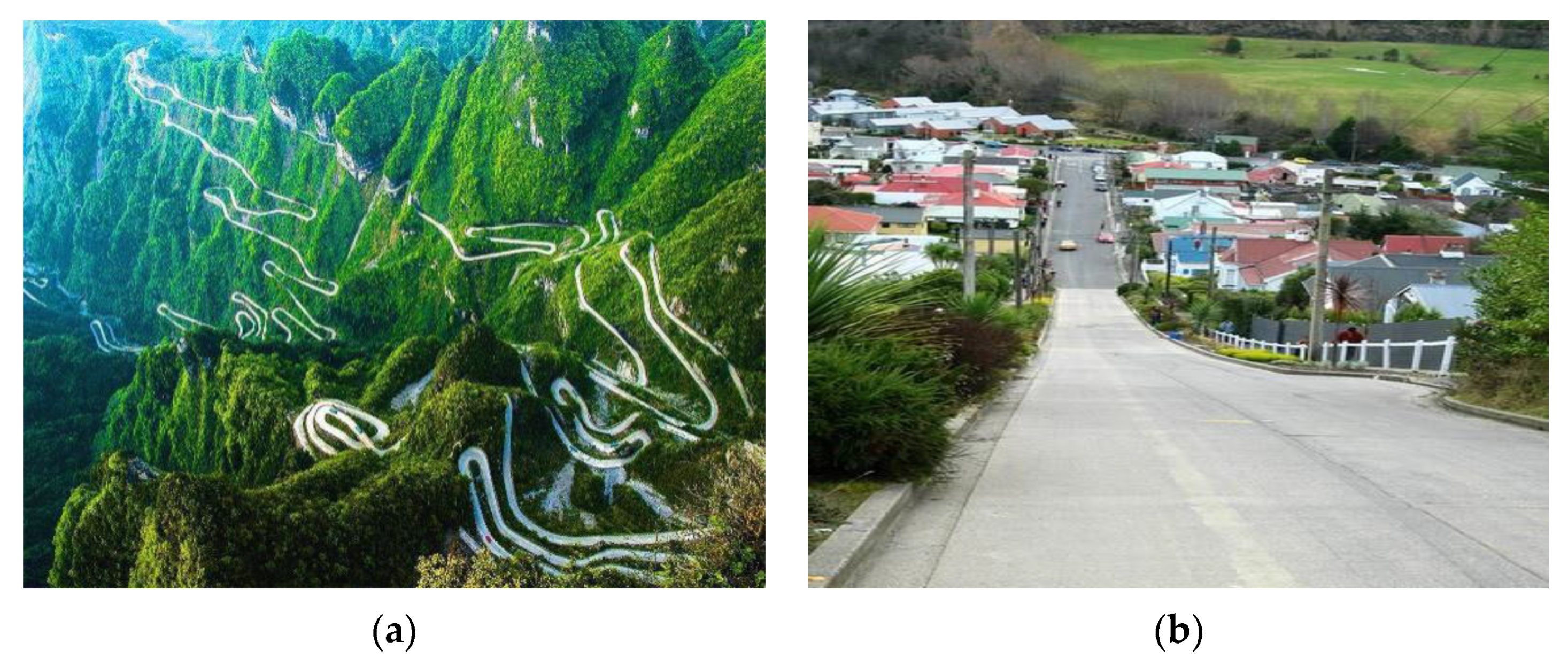
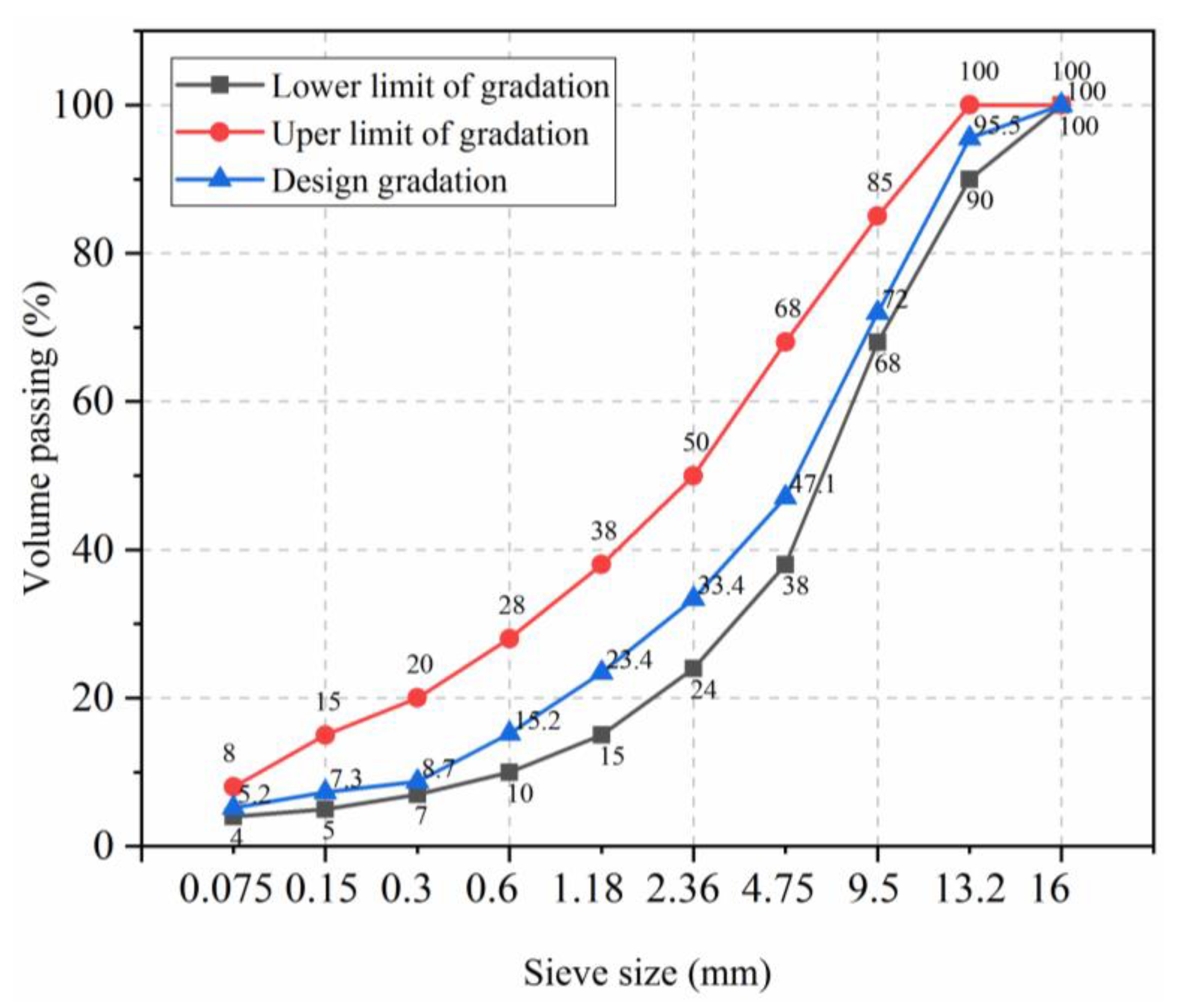
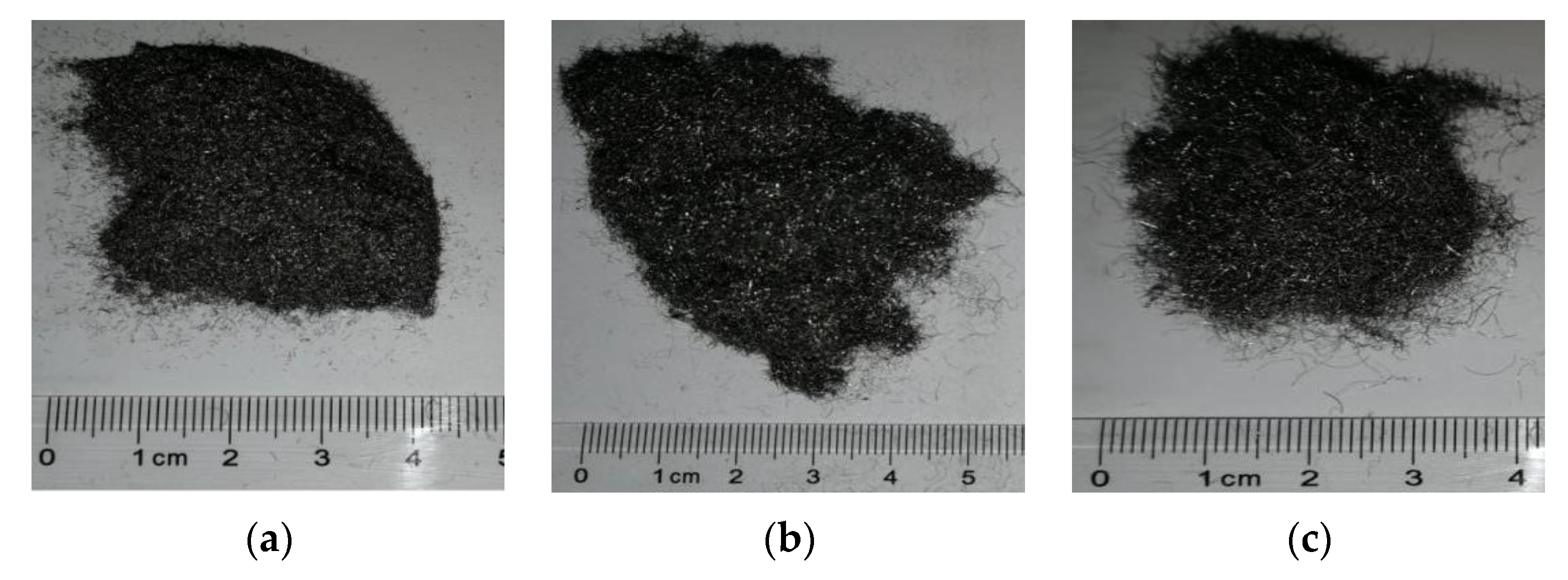
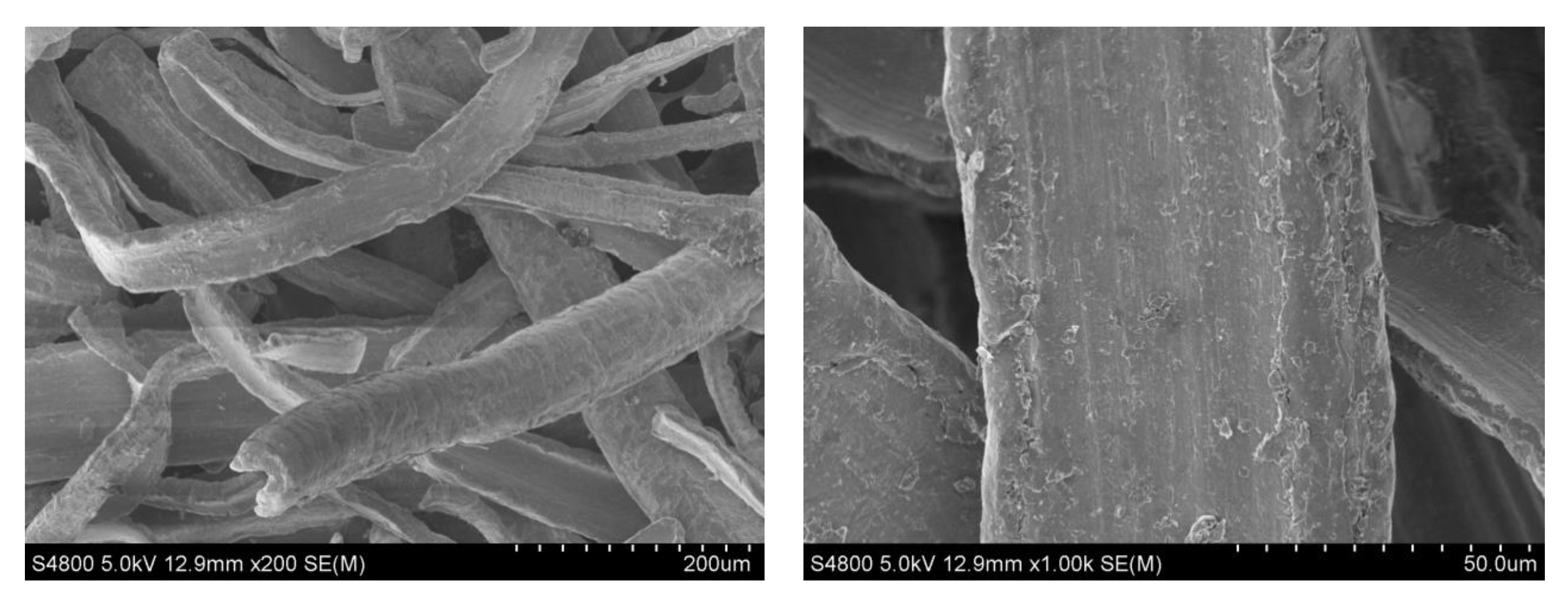
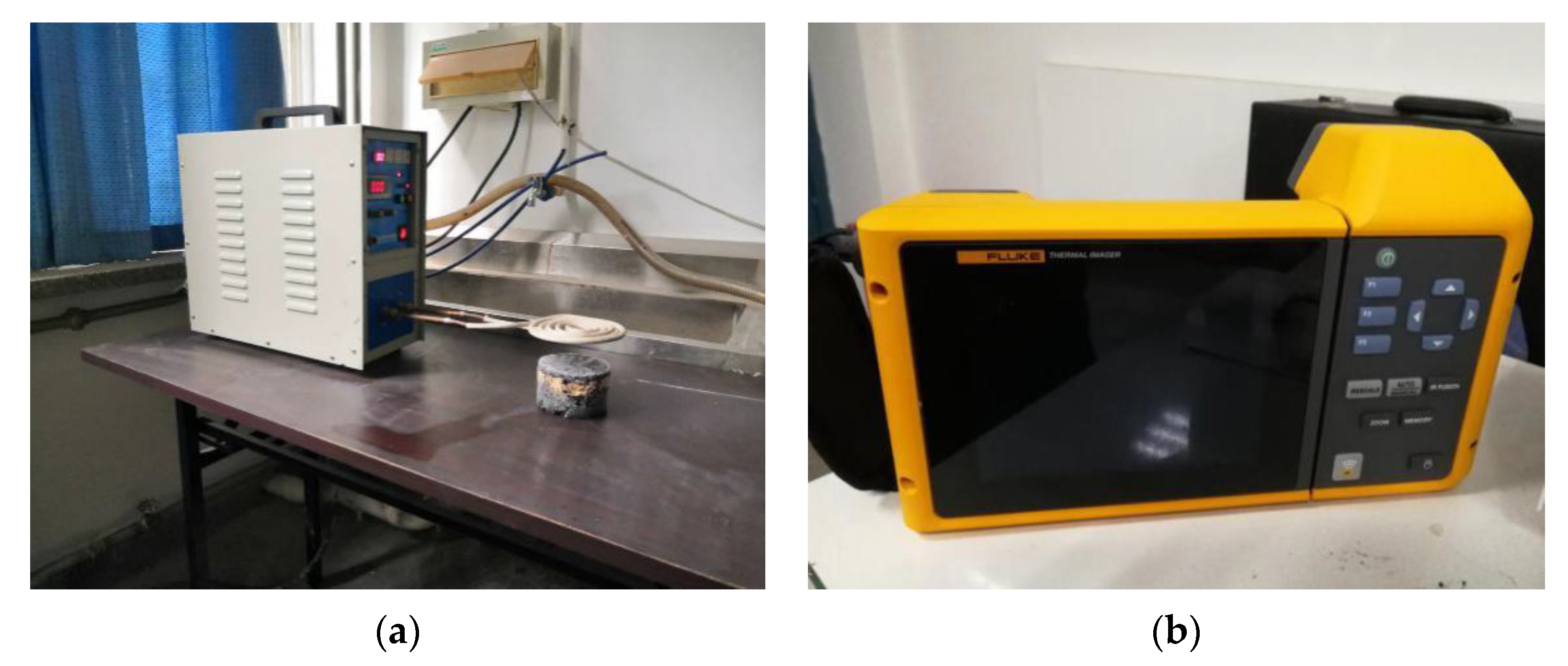

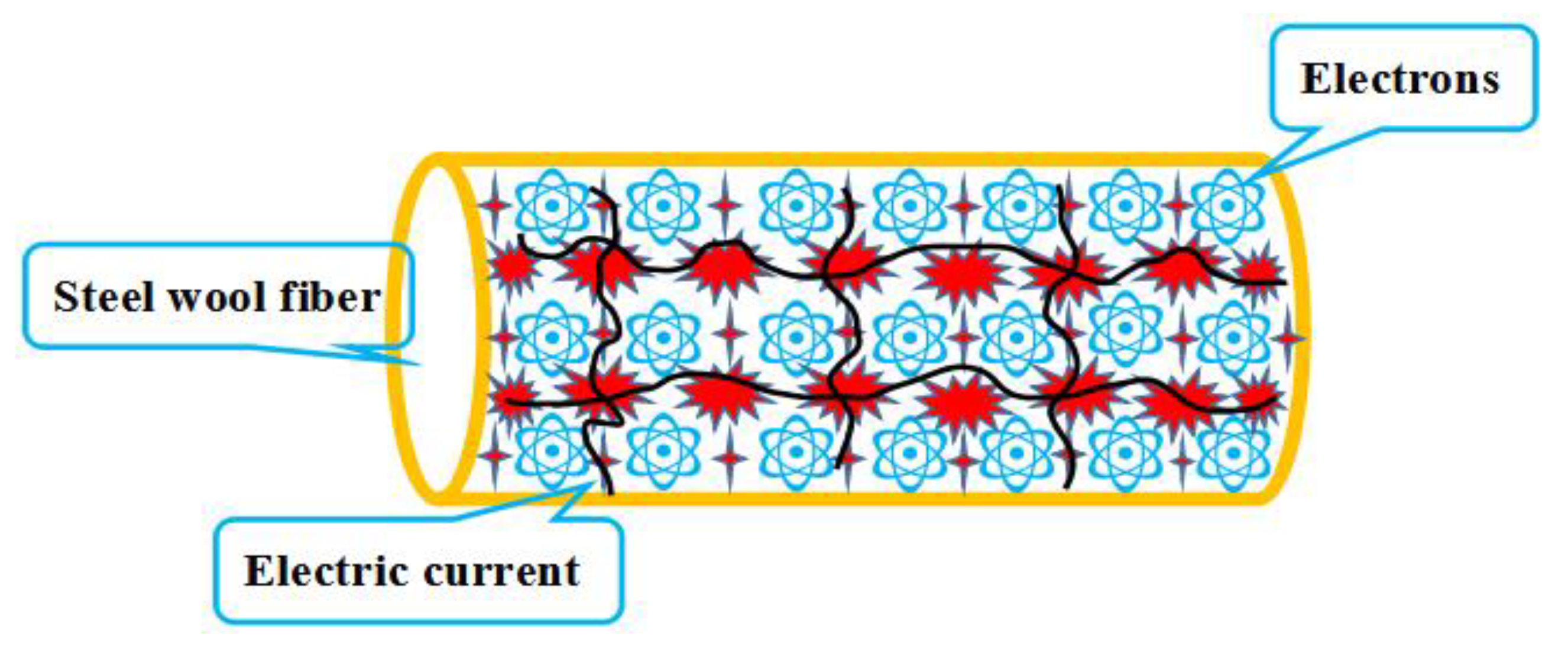

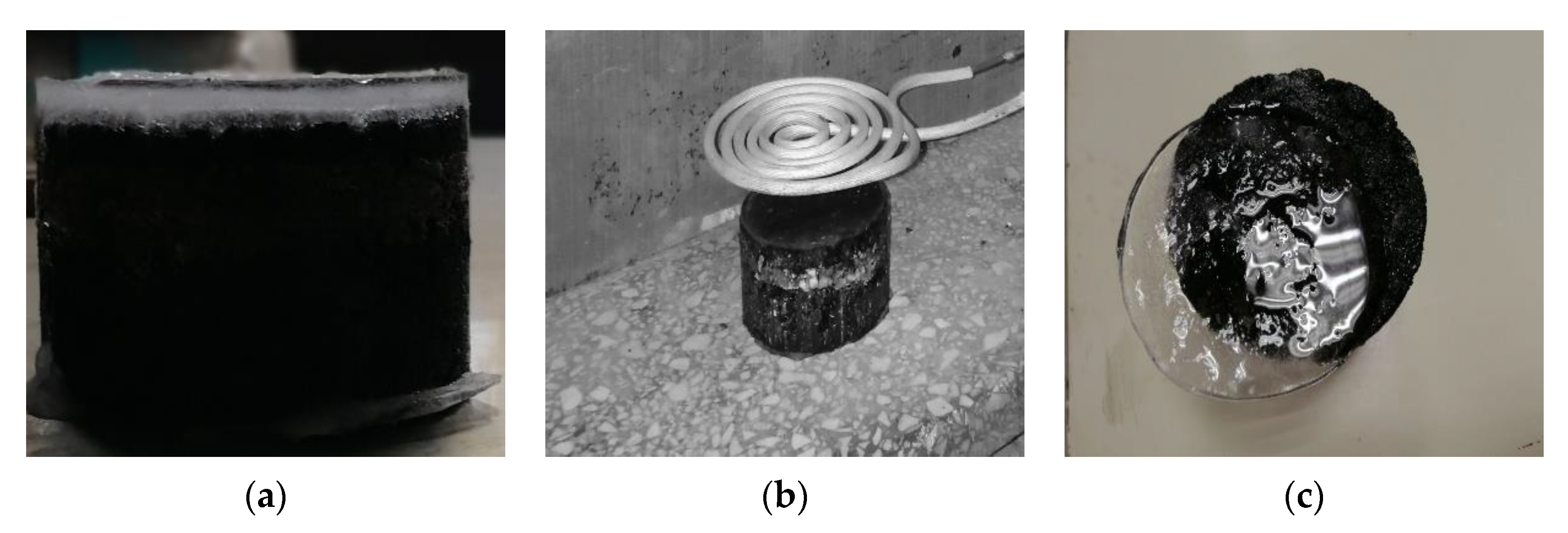
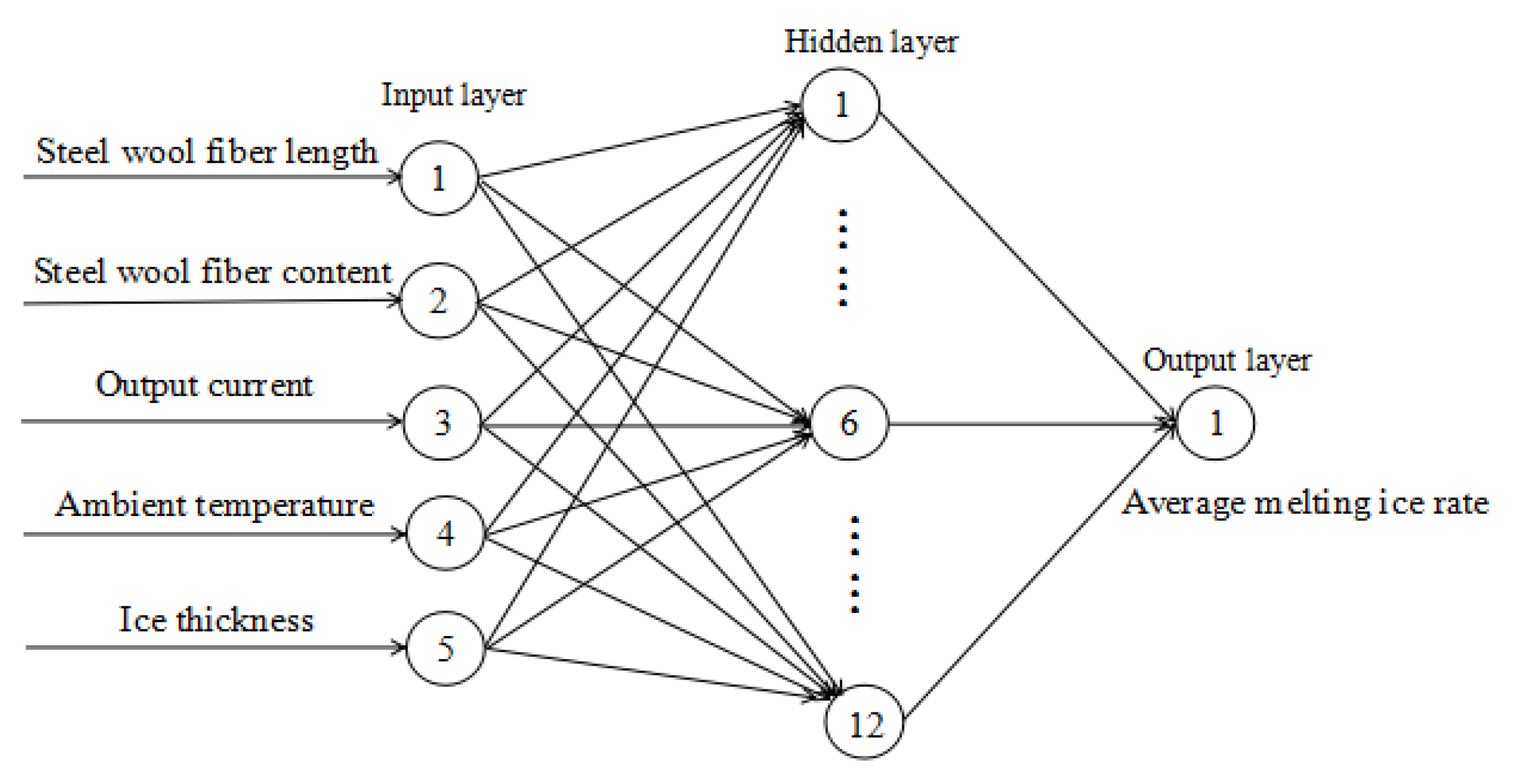





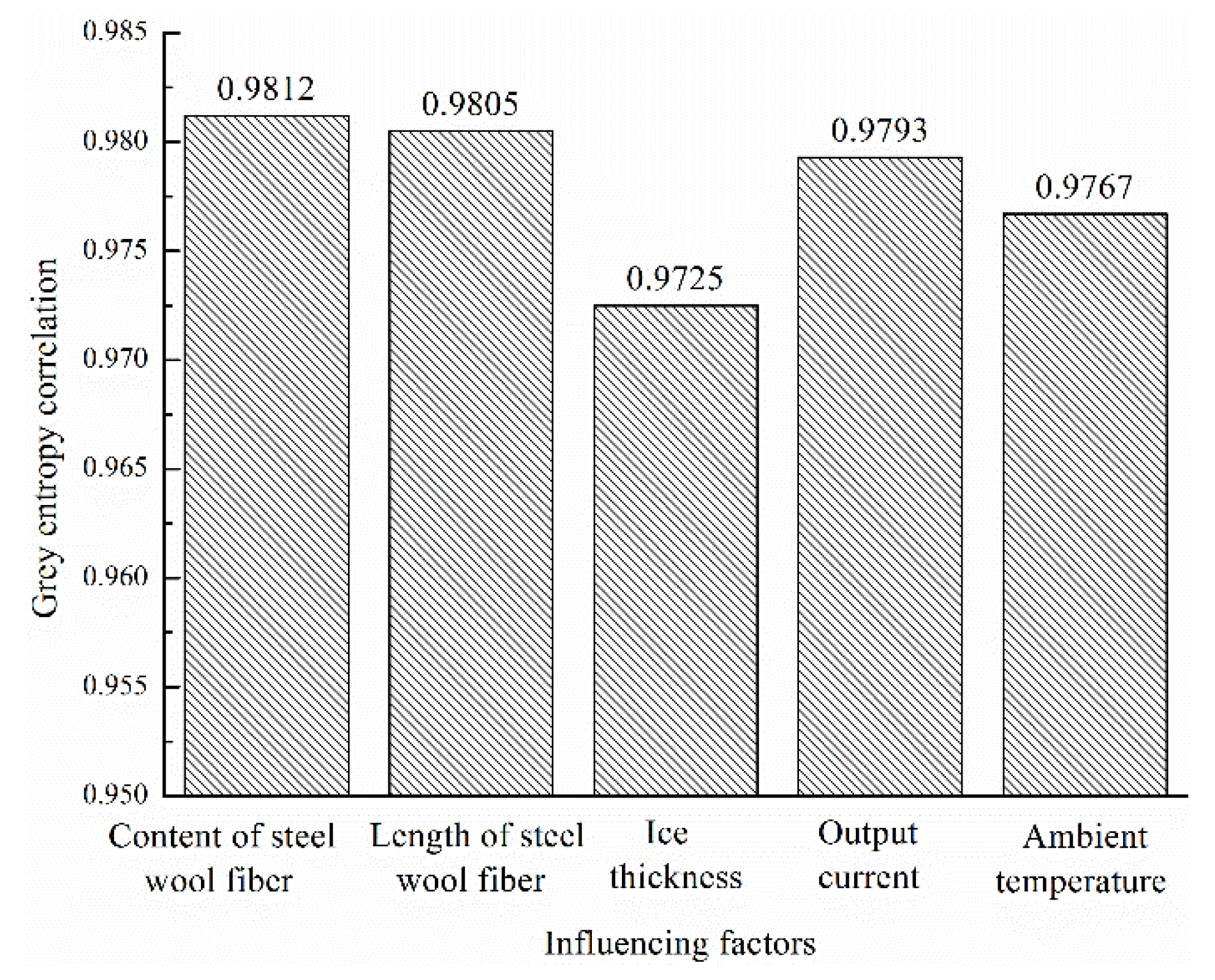
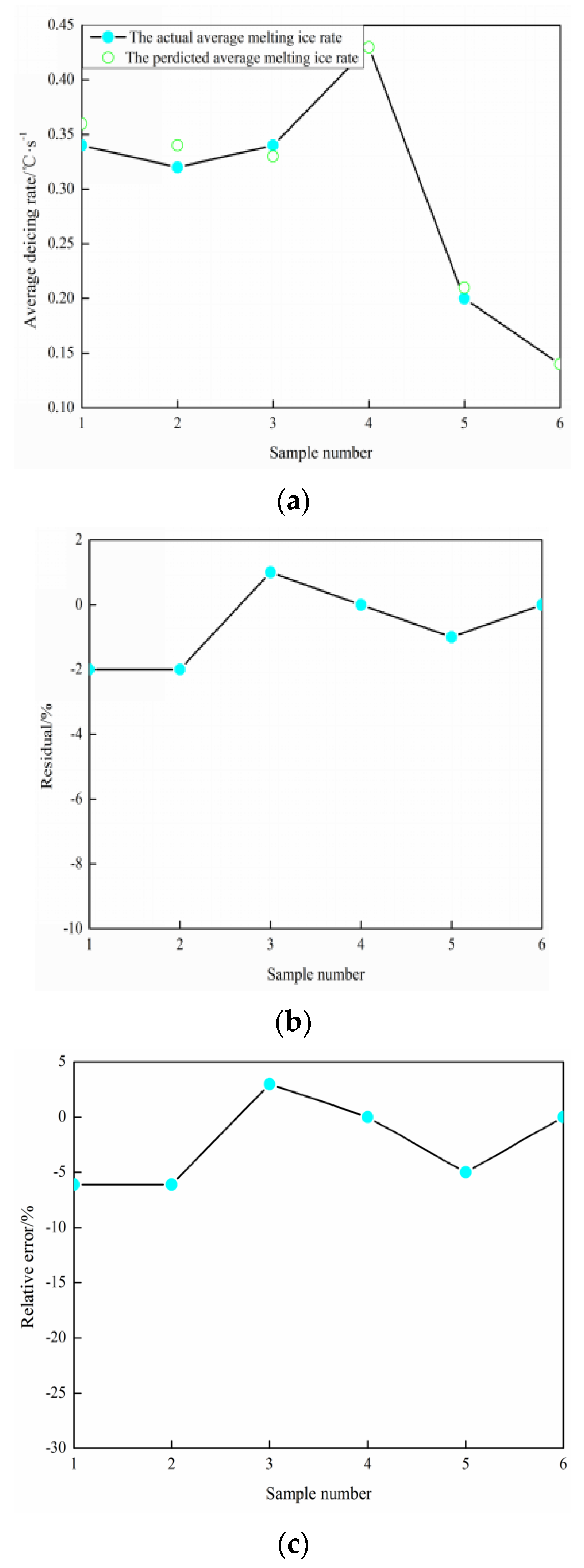
| Material | Test Items | Unit | Value | Specification |
|---|---|---|---|---|
| SK-90# asphalt binder | Penetration at 25 °C | 0.1 mm | 86 | ASTM D5-97 |
| Ductility at 15 °C | cm | 182 | ASTM D113-99 | |
| Softening point | °C | 47.0 | ASTM D36-06 | |
| Wax content | % | 1.75 | ASTM D3344-90 | |
| Flash point | °C | 304 | ASTM D92-02 | |
| Specific gravity | Non | 1.030 | ASTM D70-76 | |
| RTFO binder * | Mass loss | % | 0.15 | ASTM D2872-04 |
| Penetration ratio at 25 °C | % | 60.5 | ASTM D5-97 | |
| Ductility at 10 °C | cm | 9.8 | ASTM D113-99 |
| Test Items | Unit | Value | Test Method |
|---|---|---|---|
| Density | g/cm3 | 2.830 | T0304 |
| Los Angeles abrasion | % | 11.2 | T0316 |
| Polished value | Non | 56 | T0321 |
| Adhesivity | - | 5 | T0616 |
| Fine aggregate angularity | % | 45 | T0317 |
| Test Items | Unit | Technical Requirement | Value | Test Method |
|---|---|---|---|---|
| Apparent density | t/m3 | ≥2.50 | 2.705 | T0352 |
| Moisture content | % | ≤1 | 0.42 | T0103 |
| Particle size range<0.6 mm | % | 100 | 100 | T0351 |
| <0.15 mm | % | 90–100 | 97.8 | T0351 |
| <0.075 mm | % | 75–100 | 95.1 | T0351 |
| Hydrophilic coefficient | - | <1 | 0.31 | T0353 |
| Title | Average Deicing Rate |
|---|---|
| Multiple R | 0.901 |
| R square | 0.812 |
| Adjusted R square | 0.783 |
| Standard Error | 0.4770 |
| Intercept | 0.112 |
| Slope X1/(Content) | 0.056 |
| Slope X2/(Length) | 0.040 |
| Slope X3/(Ice thickness) | −0.033 |
| Slope X4/(Output current) | 0.035 |
| Slope X5/(Ambient temperature) | −0.001 |
| Regression equation | Y = 0.112 + 0.056X1 + 0.040X2 − 0.033 X3 + 0.035X4 − 0.001X5 |
| Evaluation Index | Factor | T Statistic | p-Value | Significance | CI Lower Limit | CI Upper Limit |
|---|---|---|---|---|---|---|
| Average deicing rate | The content of steel wool fiber | 7.223 | 0.000 | Significant | 0.040 | 0.072 |
| The length of steel wool fiber | 5.810 | 0.000 | Significant | 0.026 | 0.054 | |
| Ice thickness | −6.858 | 0.000 | Significant | −0.043 | −0.023 | |
| Output current | 2.378 | 0.000 | Significant | 0.018 | 0.043 | |
| Ambient temperature | −0.29 | 0.000 | Significant | −0.008 | 0.006 |
| Test Number | Fiber Content/% | Fiber Length/mm | Ice Thickness/mm | Output Current/A | Ambient Temperature /°C | Average Deicing Rate/°C·s−1 |
|---|---|---|---|---|---|---|
| 1 | 4 | 5 | 3 | 630 | −15 | 0.34 |
| 2 | 5 | 3 | 3 | 530 | −15 | 0.32 |
| 3 | 6 | 3 | 3 | 430 | −15 | 0.34 |
| 4 | 6 | 3 | 3 | 530 | −15 | 0.43 |
| 5 | 3 | 3 | 3 | 430 | −15 | 0.20 |
| 6 | 2 | 3 | 3 | 430 | −15 | 0.14 |
| Test Number | The Predicted Average Deicing Rate/°C·s−1 | The Actual Average Deicing Rate /°C·s−1 | Residual/% | Relative Error/% |
|---|---|---|---|---|
| 1 | 0.36 | 0.34 | −2 | −6.1 |
| 2 | 0.34 | 0.32 | −2 | −6.1 |
| 3 | 0.33 | 0.34 | 1 | 3 |
| 4 | 0.43 | 0.43 | 0 | 0 |
| 5 | 0.21 | 0.20 | −1 | −5 |
| 6 | 0.14 | 0.14 | 0 | 0 |
Publisher’s Note: MDPI stays neutral with regard to jurisdictional claims in published maps and institutional affiliations. |
© 2021 by the authors. Licensee MDPI, Basel, Switzerland. This article is an open access article distributed under the terms and conditions of the Creative Commons Attribution (CC BY) license (https://creativecommons.org/licenses/by/4.0/).
Share and Cite
Xu, C.; Wang, K.; Li, K.; Zong, Y. Deicing Property of Asphalt Mixture Containing Steel Wool Fiber by Electromagnetic Induction Heating. Coatings 2021, 11, 1276. https://doi.org/10.3390/coatings11111276
Xu C, Wang K, Li K, Zong Y. Deicing Property of Asphalt Mixture Containing Steel Wool Fiber by Electromagnetic Induction Heating. Coatings. 2021; 11(11):1276. https://doi.org/10.3390/coatings11111276
Chicago/Turabian StyleXu, Cunhong, Kejin Wang, Kehong Li, and Youjie Zong. 2021. "Deicing Property of Asphalt Mixture Containing Steel Wool Fiber by Electromagnetic Induction Heating" Coatings 11, no. 11: 1276. https://doi.org/10.3390/coatings11111276
APA StyleXu, C., Wang, K., Li, K., & Zong, Y. (2021). Deicing Property of Asphalt Mixture Containing Steel Wool Fiber by Electromagnetic Induction Heating. Coatings, 11(11), 1276. https://doi.org/10.3390/coatings11111276





